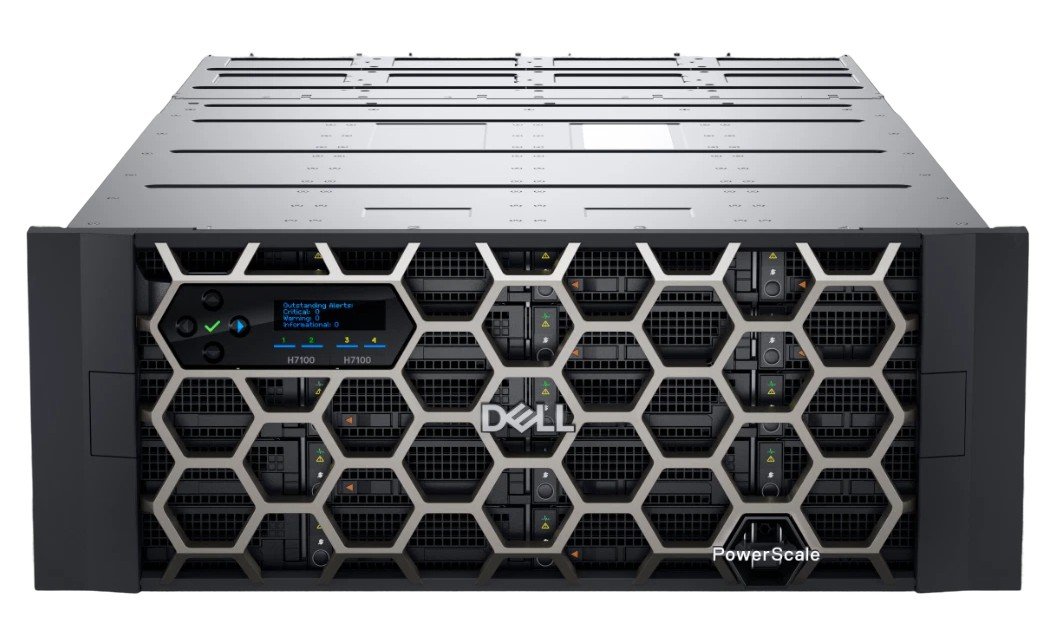In the fast-paced technological environment of today, Disaggregated Servers and Storage are becoming essential components in the transformation of AI infrastructure.
Companies such as Dell are redefining the construction and utilization of contemporary IT systems, particularly as the demand for artificial intelligence continues to escalate.
AI is not only revolutionizing business operations but is also changing the fundamental aspects of computing, encompassing everything from servers to storage solutions.
As the global surge in AI progresses, conventional IT infrastructures are proving inadequate.
Organizations now seek flexible, scalable, and cost-efficient systems capable of handling increasing workloads without being confined to inflexible vendor ecosystems. This is precisely where Dell’s innovative strategies come into play.
The AI Surge: Creating Unprecedented Infrastructure Requirements
The rise of AI represents more than just a fleeting trend; it signifies a significant transformation. According to a report by IDC, spending on AI infrastructure reached $47.4 billion in the first half of 2024, nearly doubling compared to the previous year.
By 2028, this amount is expected to exceed an astonishing $200 billion. This growth is primarily driven by generative AI (GenAI), which is advancing from basic chatbots to sophisticated agents capable of making decisions and performing autonomous tasks.
Notably, as these models gain complexity, they also require increased computing resources. Unlike earlier large language models, today’s AI systems necessitate improved memory, faster processing capabilities, and dynamic data access.
As a result, hyperscalers have been rapidly expanding their data center operations, adding hundreds of facilities in just the past year to meet these intricate demands.
Dell’s Advancement in AI Infrastructure Through Disaggregated Servers and Storage
Acknowledging a significant transformation in the industry, Dell has launched a range of new server and storage solutions specifically designed for artificial intelligence, high-performance computing (HPC), and data-intensive enterprise applications.

At the core of this transformation is the concept of Disaggregated Servers and Storage, which separates computing, storage, and networking into adaptable resource pools.
Historically, organizations faced a choice between the complexities of a three-tier infrastructure or the straightforward yet inflexible nature of hyperconverged infrastructure (HCI).
Dell’s disaggregated model combines the advantages of both options, allowing businesses to scale individual components independently while ensuring centralized management and operational ease.
This flexibility is particularly beneficial for contemporary enterprises, where workloads can vary from traditional virtual machines and ERP systems to advanced AI inference and edge computing.
By decoupling the layers of infrastructure, Dell empowers organizations to enhance performance, lower expenses, and mitigate vendor lock-in.
New PowerEdge Servers Designed for AI
Dell’s latest PowerEdge R470, R570, and R770 servers showcase this innovative approach. Equipped with Intel’s Granite Rapids Xeon 6 processors, these servers deliver up to 3.35 times the performance of their predecessors and feature a core count that is 2.57 times greater.
For instance, the R770 model facilitates up to 80% rack space consolidation in 42U configurations, which is a significant advantage for organizations facing space limitations.
Moreover, these servers are not only powerful but also intelligent. Their design adheres to the Data Center – Modular Hardware System (DC-MHS) standard, ensuring smooth integration into existing infrastructures while reducing the total cost of ownership.
These systems are adept at managing a wide array of workloads, including virtualization, HPC, analytics, and, notably, AI inference, making them exceptionally versatile.
Innovations in Storage to Enhance Data-Driven AI
Dell is once again setting new standards in storage technology. The latest ObjectScale platform, particularly the XF960 and X560 models, showcases significant improvements in throughput and storage density.
For instance, the XF960 achieves double the throughput per node compared to its closest rival, while the X560 enhances read throughput by 83%, which is advantageous for media ingestion and the training of AI models.
Additionally, features such as multi-site federation, global namespace, and geo-replication guarantee data consistency across distributed environments, a crucial aspect for contemporary AI workloads.
Dell’s partnership with Wasabi further enhances its hybrid cloud capabilities, enabling customers to optimize operations and bolster security through functionalities like data governance and copy-to-cloud options.
Advancements in PowerScale and PowerStore
Dell’s PowerScale and PowerStore solutions have also undergone significant enhancements. The PowerScale platform now accommodates up to 122TB SSDs within compact 2U configurations.
Furthermore, updated nodes such as the H7100 and A3100 provide exceptional latency performance, making them well-suited for data-intensive applications.
Conversely, PowerStore systems utilize AIOps to facilitate predictive analytics and AI-driven infrastructure management.
Simultaneously, the upgraded PowerProtect backup systems, including the DD6410, deliver remarkable speed improvements offering restores that are up to 91% faster with the new All-Flash Ready Node, which supports up to 220 TB.
These developments underscore Dell’s dedication to creating a comprehensive infrastructure ecosystem that is prepared for the era of AI.
The Importance of Disaggregated Servers and Storage in Today’s Landscape
As organizations increasingly rely on artificial intelligence to foster innovation, the ability to dynamically scale infrastructure has become essential.

Disaggregated Servers and Storage offer this capability by separating compute resources from storage and networking, thereby facilitating adaptable and scalable environments.
Rather than over-provisioning resources or being confined to vendor-specific ecosystems, companies can now customize their infrastructure according to real-time workload requirements.
This model is versatile enough to accommodate AI training, edge deployments, and conventional enterprise systems alike.
Additionally, disaggregation enhances energy efficiency, which is becoming increasingly important for power-intensive AI applications. Implementing features such as liquid cooling and modular data centers is more straightforward when components can be upgraded or scaled independently.
Anticipating the Future of AI Infrastructure
Dell’s upcoming announcements at Dell Technologies World 2025 are set to introduce further innovations in this domain. By maintaining a focus on disaggregated, AI-ready systems, Dell seeks to assist enterprises in navigating the complexities of the evolving digital landscape.
The swift advancement of exaflop-capable systems, such as Nvidia’s GB200 NVL72 integrated into Dell’s PowerEdge XE8712, indicates a clear trajectory: infrastructure must not only meet current demands but also prepare for future advancements.
Dell’s approach demonstrates a profound understanding of the challenges faced by enterprises, striving to balance performance, scalability, and cost-effectiveness while removing traditional bottlenecks.
Realizing the Full Potential of AI Through Disaggregated Servers and Storage
In summary, the shift towards Disaggregated Servers and Storage transcends a mere technical enhancement; it represents a strategic edge.
Dell’s latest offerings in servers and storage are designed with future challenges in mind, equipping businesses with the necessary flexibility and power to remain competitive in the AI era.
By adopting this innovative architecture, organizations can safeguard their infrastructure for the future, optimize resource usage, and keep up with the rapidly increasing demands of artificial intelligence.
Expert Editorial Comment
The digital transformation propelled by artificial intelligence is accelerating, necessitating infrastructure that can evolve at a similar pace.
Dell’s commitment to Disaggregated Servers and Storage marks a significant advancement in addressing these changing requirements.
By separating compute, storage, and networking resources, organizations can enhance performance, scale effectively, and minimize operational inefficiencies.
This strategy combines the strengths of both traditional and contemporary infrastructure approaches, ensuring that businesses are equipped to handle both present and future workloads.
As AI continues to advance in complexity and scale, adopting a disaggregated architecture is not merely advantageous; it is crucial for sustained success.

